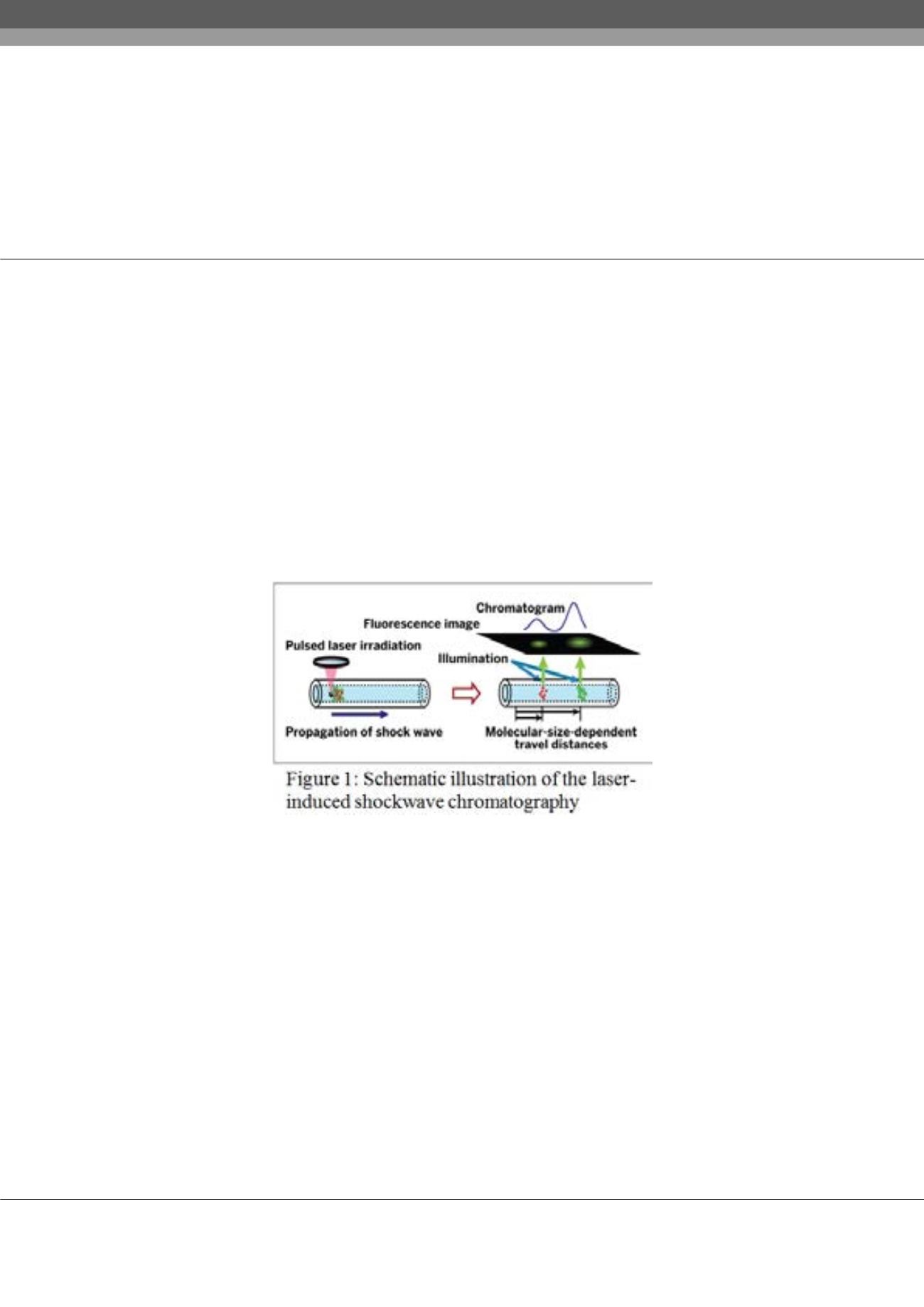

Notes:
Volume 3, Issue 2
Insights in Analytical Electrochemistry
ISSN: 2470-9867
Analytical Chemistry-Formulation 2017
August 28-30, 2017
Page 41
8
th
Annual Congress on
&
14
th
International Conference and Exhibition on
August 28-30, 2017 Brussels, Belgium
Analytical and Bioanalytical Techniques
Pharmaceutical Formulations
Effect of laser-induced shockwave on molecules and particles in solution
Nobuyuki Ichinose
Kyoto Institute of Technology, Japan
F
ocusing of a nanosecond laser pulse (≈200
µ
J) into aqueous solutions with an objective lens generates a high temperature
plasma by dielectric breakdown, which induces generation of shockwave. Propagation of the shockwave with a high pressure
causes linear and non-linear effects on the solute or dispersed particles. Time-resolved fluorescence spectroscopic observation
under microscope has revealed that the shockwave affects local concentration of solutes due to a sub-mm movement of
the molecules/particles with a near-sonic velocity in water. Combination of a ≈100
µ
m capillary to confine the shockwave
propagation into one-dimension and a collagen gel to control the holding and releasing of the loaded molecules/particles made
their movement give a spot as if they were brought by a laminar flow. The distance travelled of a few tens to hundreds
µ
m by
the fluorescent-labeled proteins, DNAs, and polysaccharides or CdSe nanoparticles was found to be molecular type- and size-
dependent. This technique (laser-induced shockwave chromatography) can avoid unwanted adhesion onto the solid stationary
phase and will be applicable to prompt analysis to study aggregation/polymerization phenomena of biomolecules.
Biography
Nobuyuki Ichinose received his PhD from Osaka Prefecture University, Japan. He is the professor of Kyoto Institute of Technology, Japan. He has over 60
publications in various fields in chemistry.
ichinose@kit.ac.jpNobuyuki Ichinose, Insights in Analytical Electrochemistry, 3:2
DOI: 10.21767/2470-9867-C1-002
















